Master Planning
Master Planning is the initial design stage where all of the variables --- site constraints, economic realities, programatic needs, environmental and aesthetic values --- must be considered and put into equilibrium so that the emerging design solution is an optimal one that addresses both short term needs and long term goals. The most critical aspect at this stage is the emergence of a luminous and simple design idea, which is the foundation of the further development of the project. Below you will find five examples of Master Plans:
Master Plan for Philadelphia Tennis Club, Philadelphia
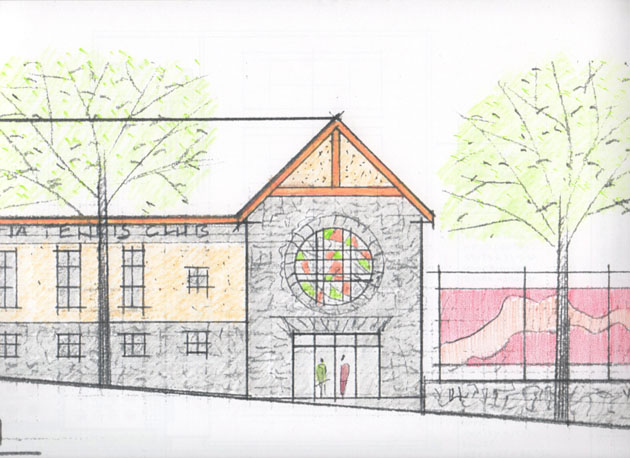
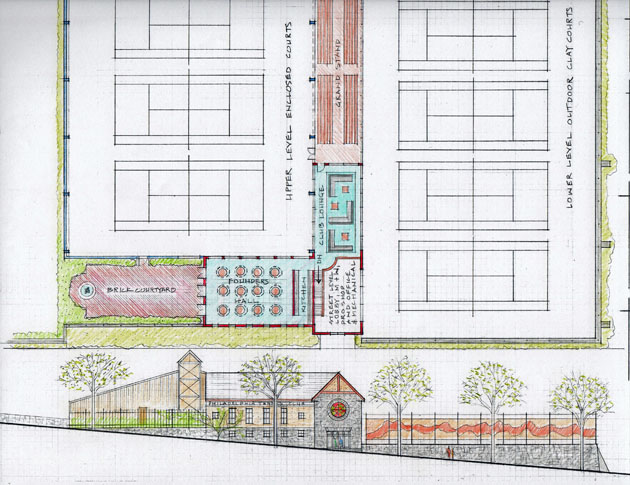
Master Plan for a Small Church
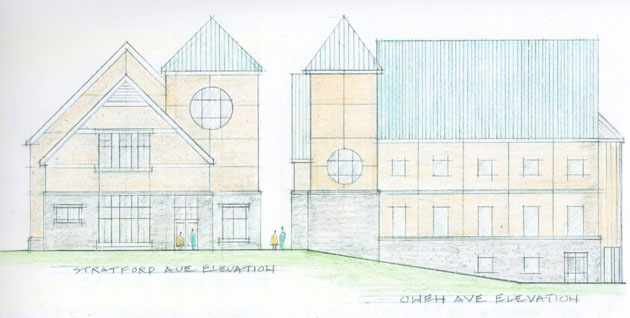
A Small Church elevation
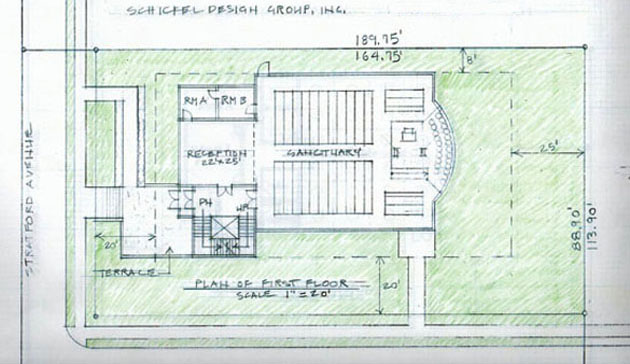
A Small Church plan view
Master Plan for Clark Park A in University City, Philadelphia
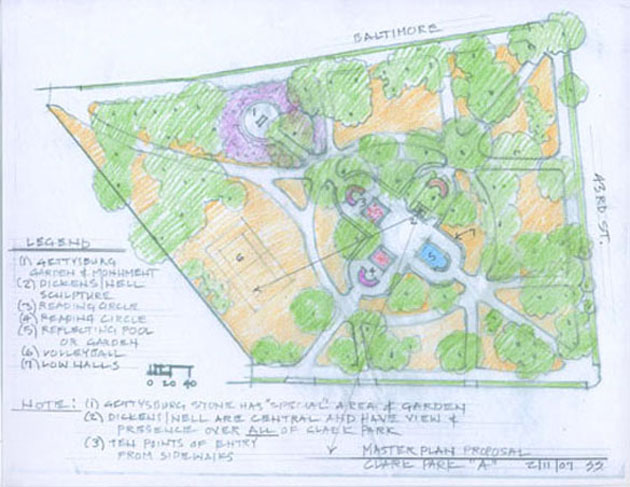
Master Plan for a Housing Development
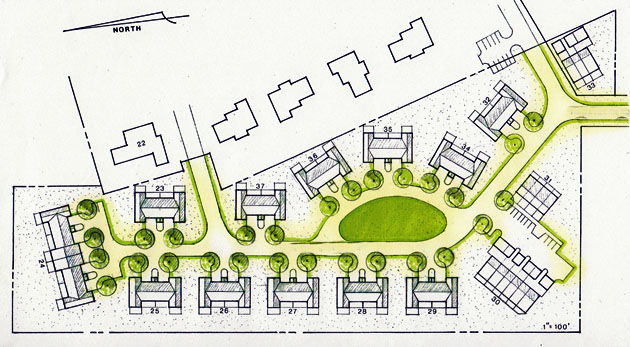
Master Plan for unique urban vision:
Marian Anderson-Paul Robeson Cultural Center, Philadelphia
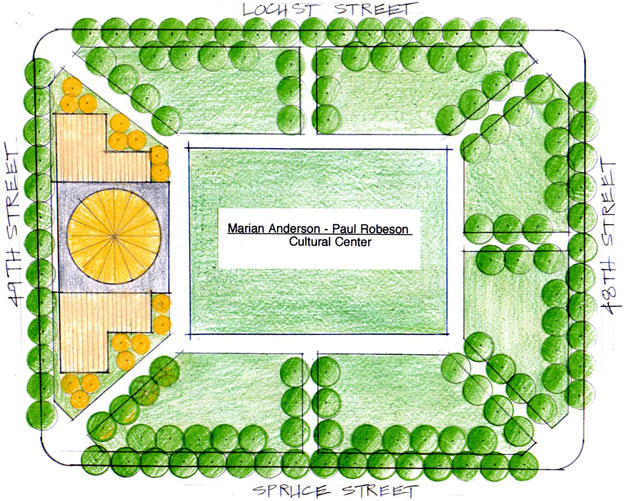
Anderson-Robeson cultural center proposed site plan
There is a hopeful and moving song recorded by Marian Anderson called "O What A Beautiful City." This song and "Go down Moses," which was recorded by both Paul Robeson and Marian Anderson, are two favorites. The two great spirituals together speak eloquently of the promise of a good life in a beautiful city and the nearly impossible struggle that many folks have had in making this promise fully realized. After the Civil War, many African Americans moved north to cities like, Chicago, New York and Philadelphia. While many have prospered, others have not. While slavery is no longer with us, the effects of slavery are indeed still with us.
And yet, modestly successful experiments at social, economic and educational integration, and prosperity, are happening right here in West Philadelphia and University City. But, by any reckoning, we still have a long way to go as a society and as a city.
Therefore, let us ask the question...what can we do with our local neighborhood physical sites that occasionally come up for development...to build a city of beauty, with many gates of opportunity opening up, where people of all ethnicities can come together to celebrate what is best in our past, best in our present and best in our future.
One answer to this question, for the site between 48th to 49th, and Spruce to Locust (which now houses a parking lot, the football field and the Croyden vacant apartment building, and which may possibly be available for development) would be the creation of the Marian Anderson-Paul Robeson Cultural Center in a tree-lined and garden setting, on a site about the size of Rittenhouse Square.
Can we create here at 48th and Spruce --- three blocks from the Paul Robeson House, at the nexus of Garden Court and Walnut Hill --- a part of the beautiful city that Marian Anderson sang about? Can we bring these great artists into the present in a vivid and powerful way, in a multi-media format that stirs the mind, heart and soul, so that generations to come will be blessed by these great artists?
As envisioned, the Marian Anderson-Paul Robeson Cultural Center would contain four primary components:
(1) A Theatre in-the-round for multi-media shows, celebrating the life and artistry of Paul Robeson and Marian Anderson and the history of the Civil Rights movement. If you have ever been to the multimedia show at the new Constitution Center, you will understand this type of format and the powerful way in which a diverse subject can be presented live and in audio/visual detail.
Each weekday, buses of school children from across Southeastern Pennsylvania would arrive at the Marian Anderson-Paul Robeson Cultural Center to learn about these two great internationally famous artists, two of the greatest vocal artists of the 20th century, and the struggles they went through to rise up with their talent in a racially divided America during the civil rights era of the 20th century. The purpose is to both educate and inspire the new generation of students that they can succeed and prosper in America today.
The Theatre in-the-round would also be a desirable venue available for small concerts by local contemporary musical artists working in many genres. It could also be the site of an international voice and instrumental music competition, produced in association with a local television station as a sponsor.
(2) Exhibit and display galleries for Pennsylvania artists to exhibit their work in a museum quality setting. The focus would be on African American visual artists, but as a community facility all local artists would be welcome.
(3) A Mentoring Center where neighborhood children could meet with an adult who would assist them with academic and personal development. The Mentoring Center would be established as a national demonstration for an urban area --- drawing mentors from local universities as well as adults who care and want to share their time and talents with a young person.
(4) A Great Lawn for outdoor concerts, festivals, touch football, sooccer, frisbee throwing and other informal sports, would be the centerpiece of this tree-lined and green oasis of beauty in the heart of West Philadelphia/University City.
PLEASE NOTE: The recent creation of the Muhammed Ali Center (www.alicenter.org) in Lexington, Kentucky and the National Underground Railroad Freedom Center (www.freedomcenter.org) in Cincinnati, Ohio prove that big ideas with powerful themes can attract funding and political support.